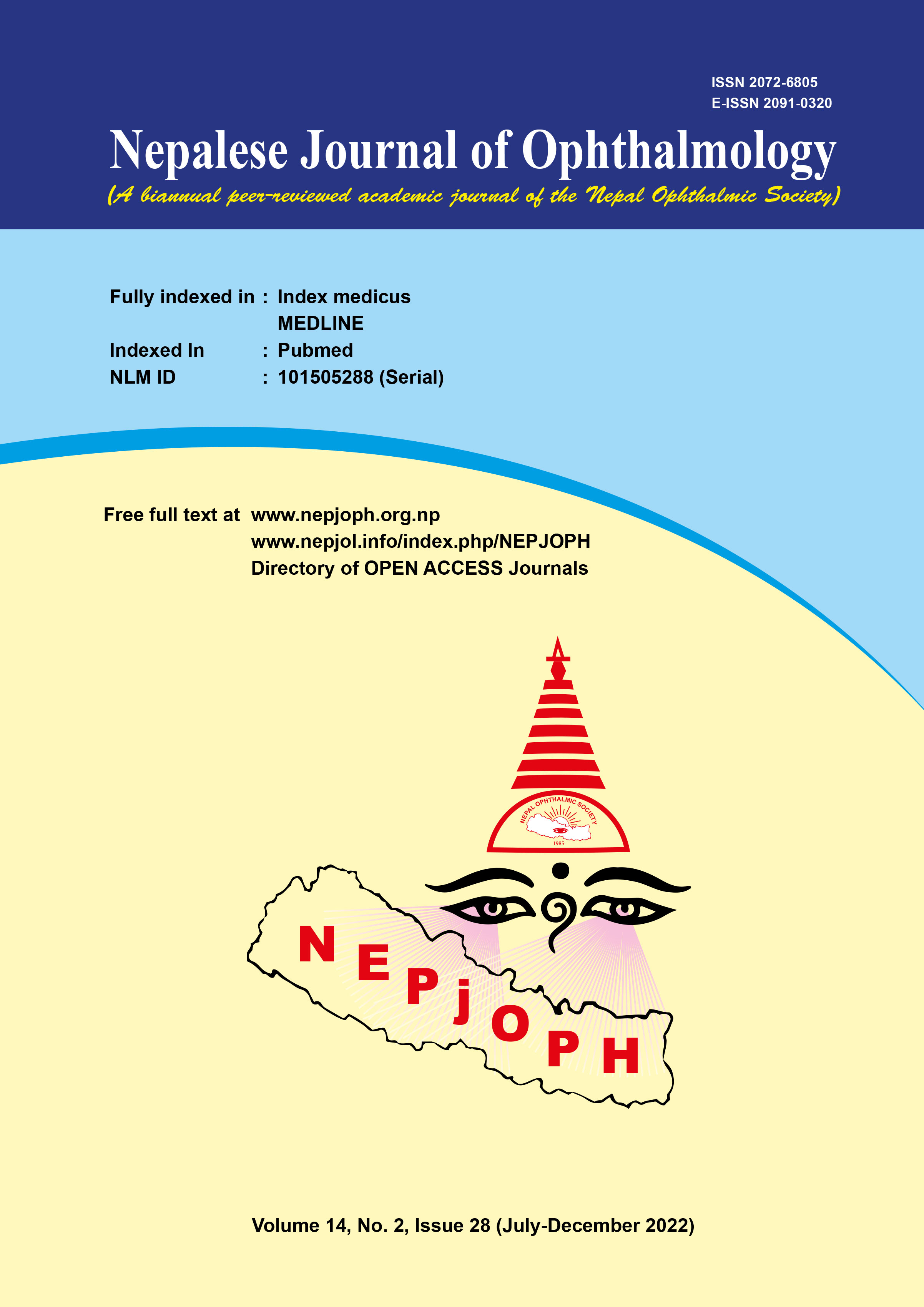Comparative study of latanoprost (0.005%) and bimatoprost (0.03%) in primary open angle glaucoma
DOI:
https://doi.org/10.3126/nepjoph.v14i2.43026Keywords:
Bimatoprost, Intraocular pressure, Latanoprost, Primary open angle glaucomaAbstract
Introduction: Glaucoma can cause vision loss by damaging the optic nerve and increased intraocular pressure is one of the primary risk factors.
Materials and methods: This was a hospital based, prospective, comparative, single masked (observer masked) study conducted on patients attending glaucoma department of Nepal Eye Hospital within a period of 1 year from February 2020 to January 2021. The sample size was 50. Specially designed proforma was used to collect the patient. Patients falling are divided in group A and group B randomly, patients using latanoprost were placed in group A and patients using bimatoprost were placed in group B. The examination procedure included history taking, Snellen visual acuity, refraction, gonioscopy, IOP measurement, slit lamp biomicroscopy and fundoscopy with 90 diopter lens.
Results: Among fifty patients 33 (66%) were males and 17 (34 %) were females, 35 (70%) belonged to urban and 15 (30%) from rural population. Maximum number of patients were in the age group of 16—30 years i.e. 15 (30%), second highest group was 61—75 years of age group i.e. 14 (28%) , 11 i.e. 22% of patients were of 46—60 years of age group. Nine (18%) of patients were 31—45 years of age group and 1 i.e. 2% was above 75 years of age. Twenty percent presented with hypertension, 14 % with diabetes mellitus and 66 % with no systemic history. Ten percent had family history of glaucoma and 90% patients had no family history . Twenty-eight percent of patients had a family history of smoking and 72 % had no history. The mean IOP of group A (0.005% latanoprost) patients initially before the start of the treatment was 27.16 mm Hg, at sixth month IOP was 17.24 mm Hg, mean difference was 9.92 mm Hg and p value was < 0.001. The mean IOP of group B (0.03% bimatoprost) patients initially before the start of the treatment was 26.88 mm Hg , at the sixth month the IOP was 15.88 mm Hg , and the mean difference was 11.00 mm Hg and p value was < 0.001. There was a significant difference in IOP at first visit and 6 months in both groups, p<0.001. (The t-test is used.) However, the mean difference of group B, 11.00, is greater than group A, 9.92.
Conclusion: Male gender, increasing age, urban population, hypertension, diabetes mellitus, and high intraocular pressure were the most prevalent risk factors. The most important factor is early detection of signs and symptoms and measurement of diurnal intraocular pressure.
Downloads
Downloads
Published
How to Cite
Issue
Section
License
Copyright (c) 2022 Nepalese Journal of Ophthalmology

This work is licensed under a Creative Commons Attribution-NonCommercial-NoDerivatives 4.0 International License.
This license enables reusers to copy and distribute the material in any medium or format in unadapted form only, for noncommercial purposes only, and only so long as attribution is given to the creator.




